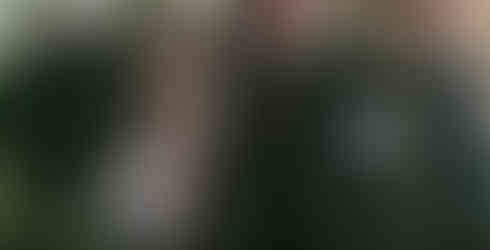Fall is Kyushu-bound! KARATSU KUNCHI
- Mikster

- Dec 24, 2018
- 3 min read
While Winter is approaching, we have lots to report on TKTB activities in Fall. For those who follow us on FB, you know we were busy in Kyushu during the month of October and November; more experience, more networking and new projects in the pipeline. Let's start with my new favorite festival / matsuri: KARATSU KUNCHI!
Karatsu is one of TKTB's frequent visit hub because of its rich history in tea-ware. For fans of Japanese Tea Ceremony or ceramics advocates and you've heard of :
「一楽 . 二萩 . 三唐津」(1 Raku, 2 Hagi, 3 Karatsu)*, that's THE Karatsu!
Karatsu-ware deserves a separate blog article at a later time!
*this phrase refers to the most renowned 3 types of chanoyou tea-ware in Japan
I missed Karatsu Kunchi last year, so I made special effort this year to go see the infamous UNESCO Intangible Cultural Heritage awarded festival. This was my third time visiting Karatsu and it was the first time seeing thousands of people packed in the big and small streets of this quiet little town. (Was joking with a friend that it felt like Shibuya at some point...)

HIKIYAMA - the float
Karatsu Kunchi first started in the1600s as a festival celebrating Fall harvest and showing gratitude to the Shinto god housed at Karatsu Shrine. In 1819, the first float Akashishi (赤獅子) Red Lion was made. Every few years after, different neighborhoods started building their own float of historic figures and mythical creatures symbolizing bravery, intelligence, and prosperity. There are now total of 14 floats, the last one made was named Shichihonmaru (七宝丸). It is a big boat with dragon head built in 1876. These are the pride of the neighborhoods whom maintain and operate the float every year. Hikiyama float is 7m tall weighing 3-4 tons, local people refers to it as "yama". It was hold up by a wood central column and can be tilt up and down, left and right. These massive structure was constructed first with wood frame and clay, overlaid with hundreds of layers of washi paper, natural glue paste to form the shape. After drying, the base structure was removed, with layers of linen and lacquer applied over it. Finally, decorated with colored lacquer, and gold leaf. It takes 2-3 years to build. For those who understand the process of Japanese lacquering, you can imagine the labor and skills required to produce them. These are now known to be the biggest lacquer objects in the world. Lacquer fans, you now know where to go see these amazing works.
Every few years, they will select one float and repair it meticulously. With the act of diligent maintenance plus a lot of town pride, Karatsu Kunchi legacy is being preserved and passed-on to new generations. Next year (2019) marks the 200-year birthday for Red Lion!
My personal favorite hikiyama is No.5 DA FISH - Tai Yama 鯛山!! Turns out the fish is the most popular float loved by everyone! It is a humongous red lacquered Tai fish that looks way too cute for something built in 1845 (it is 173 years old now).

This is the biggest annual event of Karatsu held on Nov 2, 3, 4. For 3 days, you can enjoy the high-energy chant, live traditional tunes playing along, and watch the speed and precise maneuvering of these heavy floats (by hand) around tight 90-degree street corners through the city (quite a bit of "planned yanking"). Not to mention, lots of drinking and street food. Experiencing the parade during day time and night time is also very different; and there is plenty of opportunity to take photos and watch all floats anywhere in the city. Crowd-control and route-planning was very well-organized. (unlike cherry blossom viewing in Tokyo or Kyoto where you can barely move or see anything)
However, Karatsu has very limited accommodation even during regular visits. During Kunchi, it is IMPOSSIBLE to find accommodation, and parking could be a pain when most streets are blocked for the parade. So plan IN ADVANCE. I am extremely blessed to have Karatsu friends offering home-stay and special sneak peaks of "behind-the-scenes". (Great hugs to Hashimoto family and Monta san for my remarkable experience!! Love Karatsu people and the town).
My favorite festivals in japan used to be Aomori's Nebuta and Johana's Hikiyama. Sorry, Karatsu is now my No. 1 favorite! :-) The township and energy makes me want to return next year (until then, I will be back for their ceramics).
Well, Keep Going. Japan is the land of matsuri. Let's discover new ones that top Karatsu Kunchi.
(Rest of the time, all Hikiyama floats can be viewed at the Karatsu Hikiyama Exhibition Hall. However, they are displayed behind glass. Best to catch them in-action next November!)





















Comments